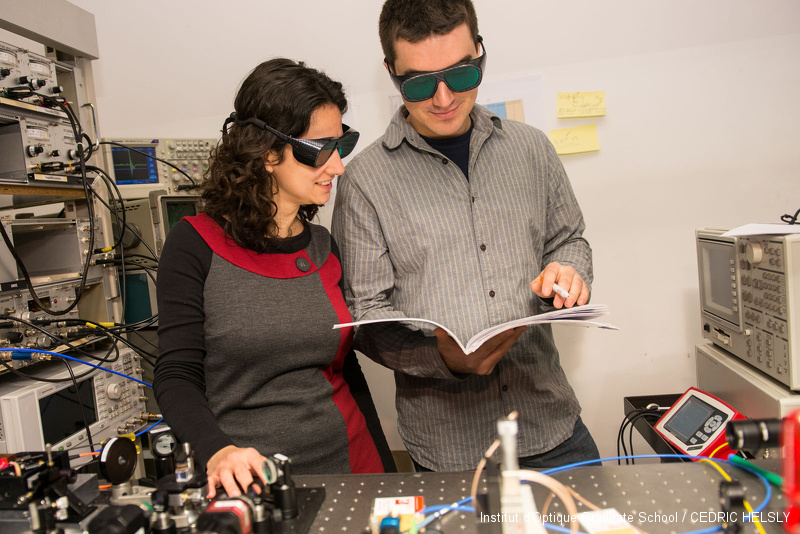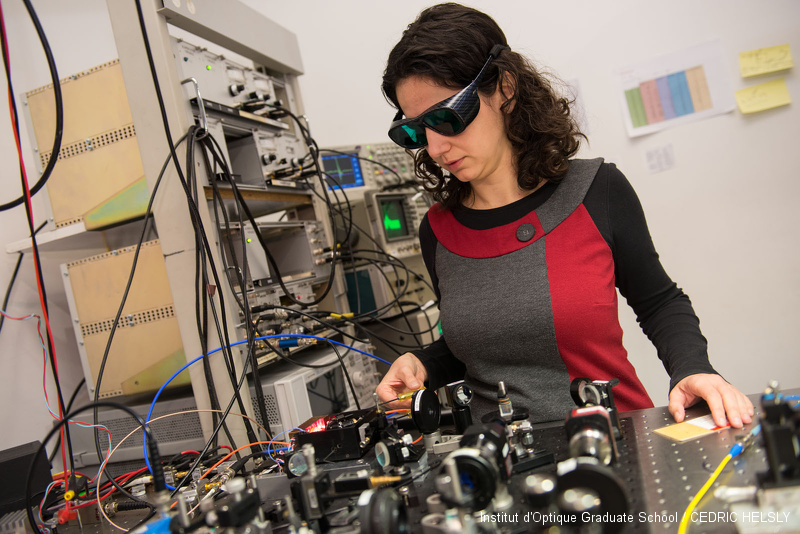Activities Time-Frequency:
Workforce: 3with: 2 permanents, 1 non-permanent
PALAISEAU, France
Laboratoire Charles Fabry (LCF) is a joint research laboratory established by Institut d'Optique ? Graduate School and the French national research agency CNRS with Université Paris-Saclay as a cooperating institution. The research themes at LCF covers a broad spectrum of topics in photonics and its applications, from quantum optics to image physics, with a strong experimental component. LCF is composed of about forty researchers and professors, as much technicians and engineers, and about sixty PhD students and post-doctoral researchers.
The LCF activities that fall within the scope of FIRST-TF are those conducted within the LASERS group on optically-pumped semiconductor sources. We design and validate the laser active structures; we study the properties of these lasers in the context of metrology (spectrum, noises, tunability, ...). We are involved in the development of dual-frequency lasers dedicated to high-performance CPT atomic clocks.



Expertise :
- Oscillators
- Optical oscillators, lasers
- Lasers locked to a Fabry-Pérot cavity• Laser stabilization on ultra-stable cavity
- Laser sources• Optically-pumped Vertical External Cavity Surface-Emitting Lasers - single- and dual-frequency operation
Characterization of active structures, laser performances and spectral stabilization.
- Optical oscillators, lasers
- Atomic references
- Micro-wave clocks and subsystems
- Coherent population trapping (CPT) clocks
- Micro-wave clocks and subsystems
- Specific methods of time-frequency metrology
- Noise
- Phase noise, PLL• Laser phase locking on ultra-stable cavity
- Intensity noise• Noise intensity measurements of laser sources, softwares and modelingCorrelation measurements
- Systematics, Accuracy, Calibration
- Systematics in atom-light interaction• Light-induced interactions as a limitation of atomic sensor
- High resolution spetroscopy
- Atomic spectroscopy• Microwave spectroscopy and manipulations of atoms (Rydberg atoms, hyperfine transition)
- Noise
- Techniques for time-frequency metrology and applications
- Electronics
- Analog electronics• Design and realization of controllers for stabilized laser sources
Wavelenght or intensity laser feedback control
Acousto-optic drivers
Lock-in amplifiers - Digital electronics• PIC and ARDUINO microcontrolers
- Acquisition, interfaces, converters• Instruments management in PYTHON language. GUI use the GTK graphical library.
- Analog electronics• Design and realization of controllers for stabilized laser sources
- Mechanics, Ultra-high vacuum, Cryogenics• Ultra-vacuum system for cold atom trapping
- Optics
- Guided optics, specific optical fibres• Welding of special fibres, control of fibres
- Control of the optical beam characteristics• Study of waveplanes from laser sources
- Cooling or trapping techniques
- Cooling, trapping of atoms• Laser cooling, magnetic and optical trapping, optical tweezers
- Interferometry techniques
- Atom interferometry techniques• Ramsey interferometry, Bragg diffraction with matter wave
- Electronics